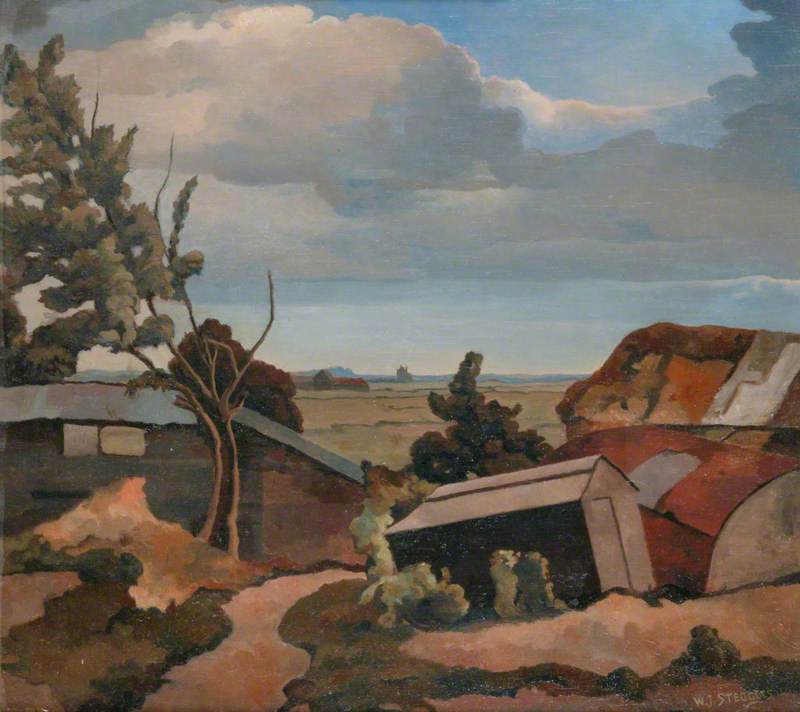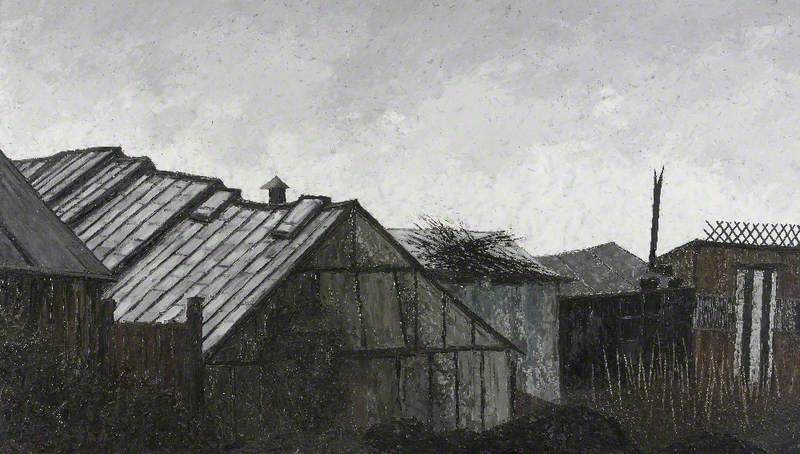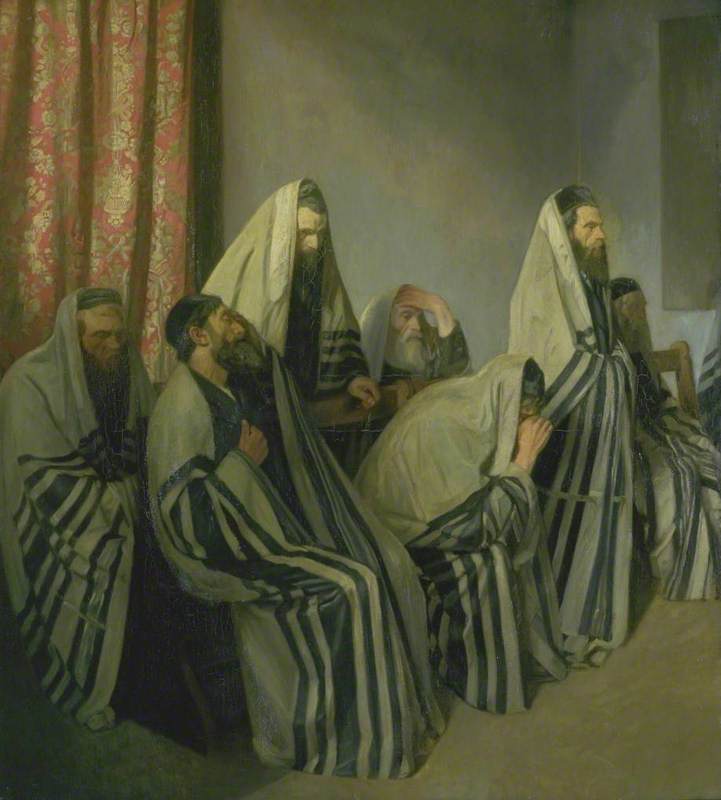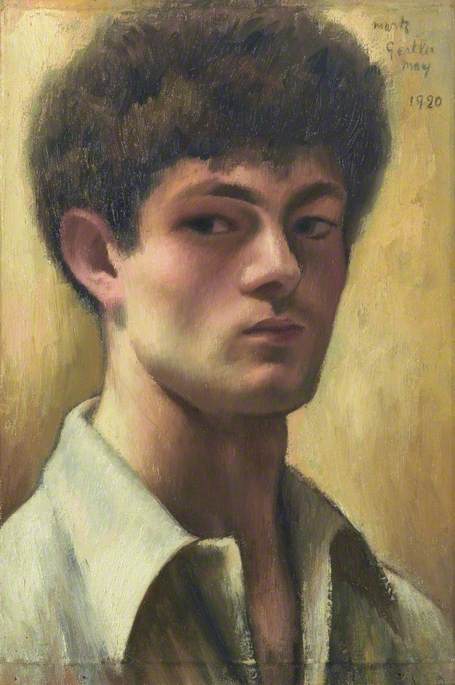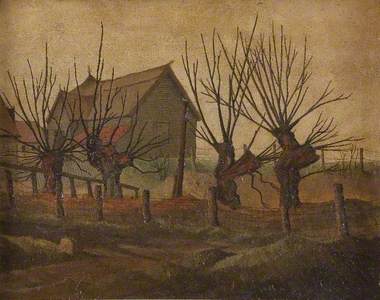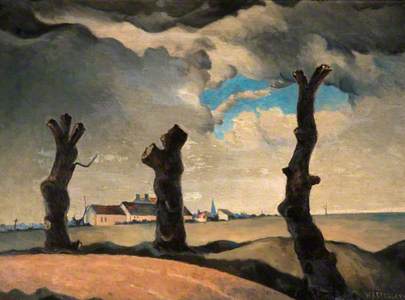When one has a family member or close friend who has done great things, more often than not, one may not discover the full extent of that person's activities until they have passed away; so it was with Walter James Steggles. He was my wife's uncle; a lifelong bachelor who had lived with his parents and then latterly with his sister, Muriel, as they moved from place to place as pairs of households. I first met Wally in the late 70s when, with his mother and sister, he came to visit my then prospective parents-in-law before I married his niece.
I knew that Wally was a painter and that he was still 'working'. What was not immediately apparent though was the level at which both he and his brother Harold had been 'active'. On the occasions that we chatted to Wally the conversation would eventually turn to the subject of the East London Group and more particularly to a few specific members.
He was extremely close to Elwin Hawthorne, whom he would see at least once, if not twice, a week when they were young; sadly Elwin tragically died in 1954 when he was only 49. Wally had maintained close contact with Elwin's widow and her son, plus Phyllis Bray and Cecil Osborne and he corresponded with all of them up until their respective deaths. As a result, conversations tended to revolve around the various Group members that he was still in touch with, rather than talk of their days exhibiting at the Whitechapel and Lefevre.
Wally was one of the last surviving members of the East London Group when he died in 1997, which was shortly after he and Muriel had combined households having moved, from Bradford on Avon to Calne in late 1996.
Muriel survived Wally by 11 years and she died in 2008; latterly she spent extended stays in hospital or a local nursing home, as a result of which the house lay unoccupied and the contents abandoned to an as yet unknown fate. After Muriel's death, her solicitor gave us the key to her house and completely out of the blue, my wife and I found ourselves launched into the world of art!
On arrival we were met by a most extraordinary sight of pictures and frames stuffed into almost every cupboard, with the exception of the kitchen. Our first impression was one of shock due to the enormity of the task, but over the following weeks this was soon overtaken by an overwhelming sense of responsibility as we unearthed the catalogues and archive material.
With potentially interesting items interspersed amongst the day-to-day dross of modern life, it became imperative to sort through every piece of paper or magazine to ensure that we had not inadvertently overlooked some gem of information. We soon found that we were amassing very interesting reading material.
The group show catalogues from Alex, Reid & Lefevre were obviously of direct interest to the Group's activities, but mixed shows that were detailed in some of the other catalogues opened our eyes to an entirely different world, artistically speaking. Co-exhibitors read like a 'Who's Who' of early twentieth-century British art – Duncan Grant, Vanessa Bell, Mark Gertler, Ivon Hitchins, Stanley Spencer, John and Paul Nash, Christopher Nevinson, Christopher Wood, Eric Gill, Philip Wilson Steer, Sine Mackinnon, William Patrick Roberts, the list was endless.
In 'British & French Artists Exhibition' at Lefevre in 1935 a small show of 64 pictures included names such as Paul Cézanne, Edgar Degas, Edouard Vuillard, Paul Gauguin, Maurice Utrillo, Alfred Sisley, Claude Monet, Auguste Renoir and Pablo Picasso and, interspersed between them, names such as Elwin Hawthorne, Grace Oscroft, John Cooper, Henry Silk and Harold and Walter Steggles from the East London Group!
In tandem with the catalogues were the newspaper cuttings from the group shows. These were written by many of the leading art critics of their day and they invariably described the impact that the Group's work was having, the support they were getting from leading art enthusiasts and the commercial success of their shows; in 1930 they sold 62 of the 98 pictures on display.
Against this background we found ourselves coming to the conclusion that this once important group of artists, who had been overlooked and subsequently forgotten by the post-war art world, deserved another chance to be brought back into the 'daylight' of the twenty-first century and to have their work reappraised and reputations re-evaluated. Until we found the catalogues, newspaper clippings and magazine articles about the Group, and more particularly Wally, we, as family members, had quite naturally considered their work as 'normal' and as such had not really given it our full and objective consideration.
Wally painted very nearly until he died and by his own admission 'couldn't stop', so his output was considerable. We were handed the responsibility of dealing with all his finished work, sketches and prep-drawings some of which, like his sketch for Boston had significance with regard to Art UK's work. Others, like the poster for The Thames at Cookham for Shell, are possibly the only known examples of that commission, as the Shell archive has no copies.

© Walter Steggles Bequest. Image credit: The Collection: Art & Archaeology in Lincolnshire (Usher Gallery)
Walter James Steggles (1908–1997)
The Collection: Art & Archaeology in Lincolnshire (Usher Gallery)The easy answer would have been to send everything to auction or sort them and place them with a dealer in the hope that they might sell over time, but then the sketches and prep-drawings might have been lost or destroyed and the story would have been lost forever.
In 1997, at Wally's funeral, we had met David Buckman and discovered that he was researching the Group. By good fortune, since 2009, we have been able to assist David with information and material for his book From Bow to Biennale, which tells the story of the Group and its members. Now it is for today's art world and the future to decide whether, having flown so high in their day, the Group merit another chance.
Alan Waltham, relative of the artist



